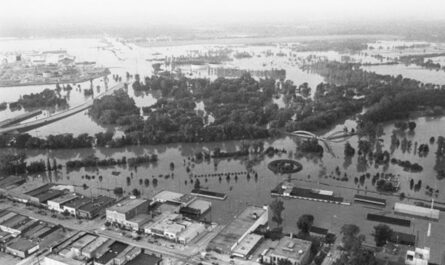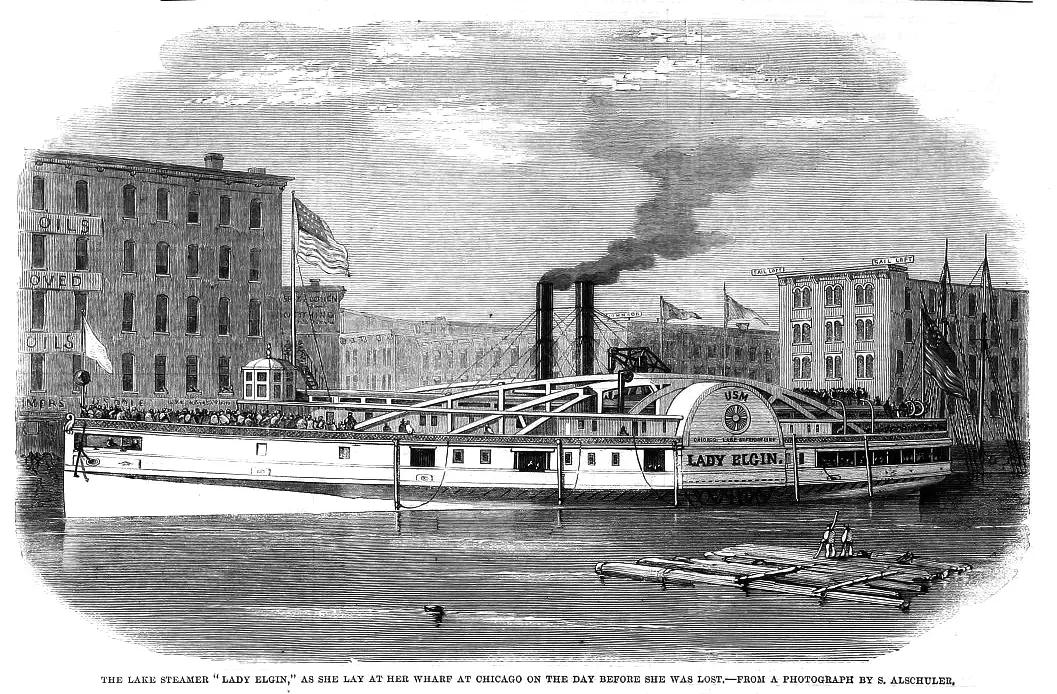The history of Walloon Lake dates back long before resorts and Hemingway; it was home to the Anishinaabe peoples. The Odawa (Ottawa) and Ojibwe lived here, calling the lake Muqua Nebis – “Bear Water” – for its abundant wildlife. French voyageurs arrived in the late 1600s and traded furs with the native population. By the 1800s, American settlers moved in for the pine logging boom. The dense forests were soon cleared, and by 1873, the Grand Rapids & Indiana Railroad had reached nearby. The lake was long called “Bear Lake,” but was renamed Walloon Lake by 1900 – possibly in honor of Belgian Walloon settlers – and the village around it grew to include a railroad depot and steamboat landing.
Table of Contents
Video – History of Walloon Lake – Fascinating Moments That Shaped a Michigan Resort
Early Settlement Around Walloon Lake

In the late 1800s, lumbermen arrived and logging boomed. The Grand Rapids & Indiana Railroad reached the region in 1873 to haul pine. By 1891, a short spur had been built from nearby Clarion to the lake, creating a station at Walloon (then known as Bear Lake/Talcott). That new rail link opened Walloon Lake to tourists. Steamships ferried families from Chicago, Detroit, and other Midwestern cities to northern Michigan. Vacationers came seeking cool air, fishing, and sailing. Small hotels and boarding houses sprang up — at one point, the village supported about a dozen inns.
Railroads and the Resort Boom
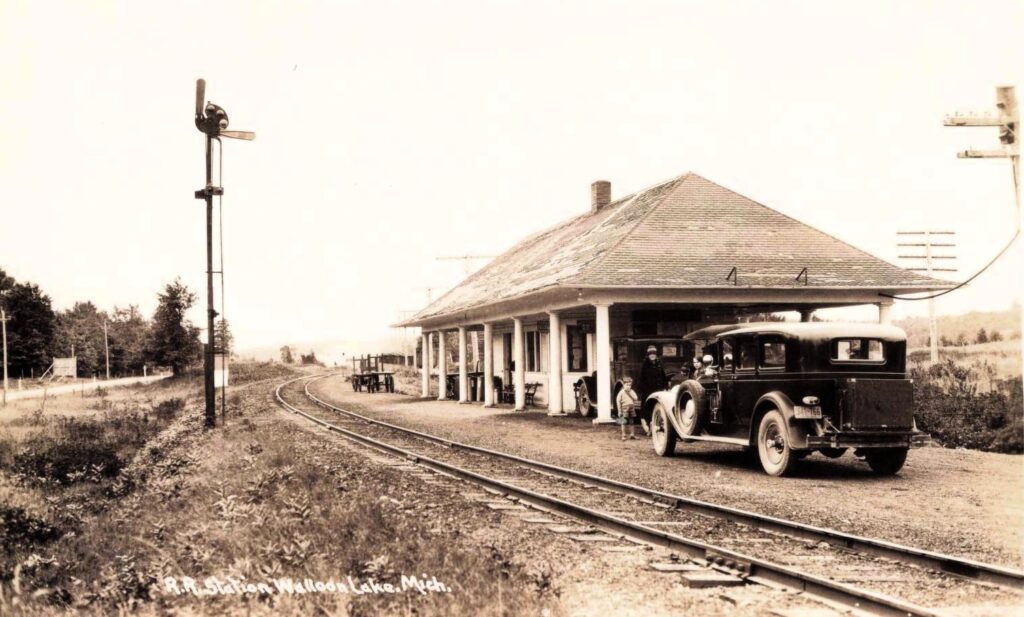
With the logging era waning, the railroad shifted to tourism. Starting in the 1880s, the Grand Rapids & Indiana marketed itself as “The Fishing Line,” putting luxurious sleeping and dining coaches on its trains for Chicago and Detroit vacationers. Travelers could steam across Lake Michigan to Harbor Springs, catch the train to the Walloon Lake depot, and then board a small steamer like the Tourist to reach the north shore.
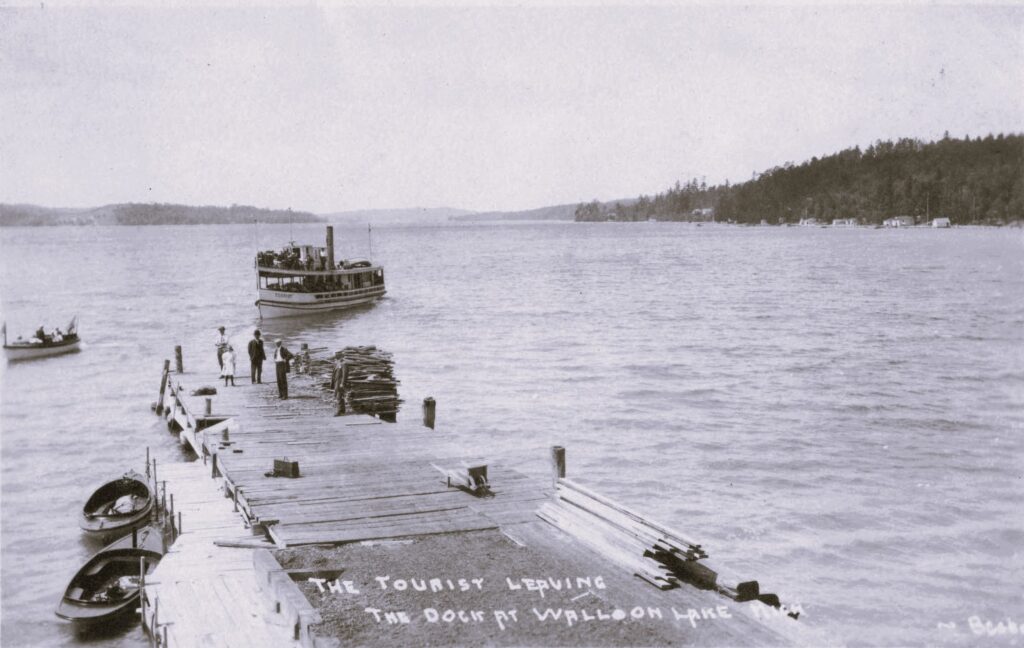
Walloon was one of the many Inland Lakes popular for tourists in the late 1800s. By the 1890s, the lakeside village had a station, docks, and several inns and hotels along its waterfront. The tourist boats were lively – one Tourist steamboat even carried a 14‑piece band and a slot machine on its deck. Ferries and pleasure craft plied the clear waters of Walloon Lake, bringing anglers and families out of the cities. Even modest lodgings, such as the Fern Cottage (opened in 1891), advertised rooms at just $2 per day.
A Village in Summer
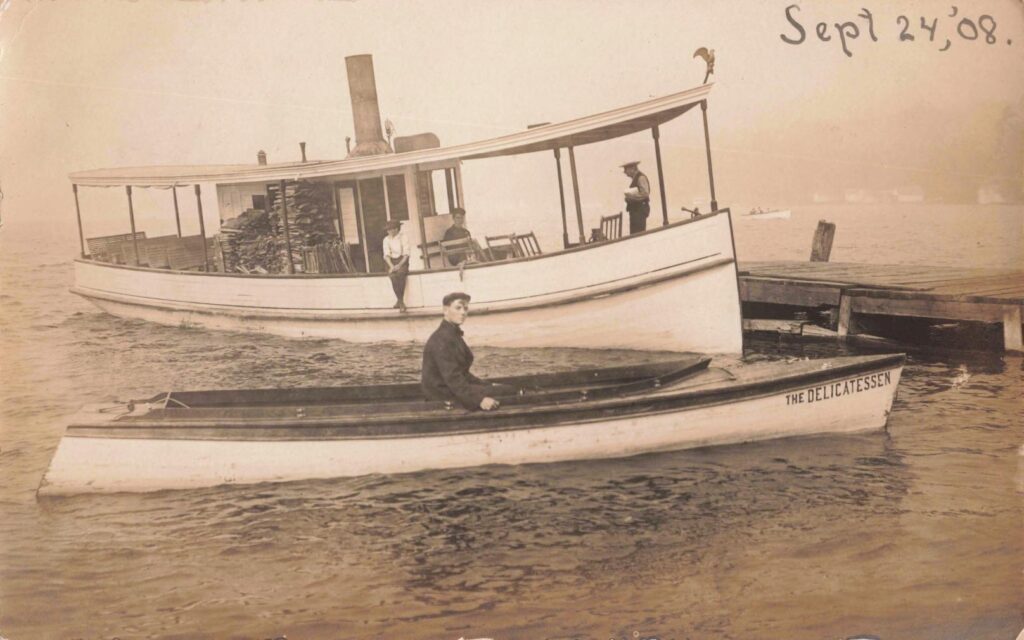
By 1900, Walloon Lake had truly become a summer resort. Tourists flocked here to fish, sail, swim, and escape city heat. The permanent population was only a few hundred, but it often doubled when cottages and resorts filled on summer weekends. The little business district grew to include three general stores, a bathhouse, boat liver,y and bowling alley, serving four hotels and even two churches.

Life was quiet and car‑free – one 1911 account describes it as “a quiet little hamlet… [with] no dust, no smoke, no noise – just nature’s paradise.” The era had its dramatic moments. In August 1907, a major fire “swept through the main street” of Walloon Lake Village, destroying the depot, post office, and most shops. The town was rebuilt over the next year, and life on the lake continued to thrive.
Hemingway’s Walloon Lake
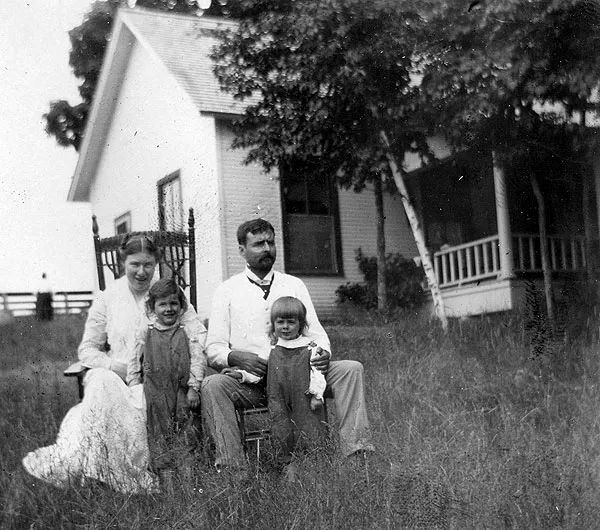
The most famous summer visitor was Ernest Hemingway. His parents first brought him to Walloon Lake when he was just six weeks old aboard the steamship Manitou. In 1899, the family bought a lakefront lot and built the cottage Windemere (completed in 1900) on the north shore. Ernest spent parts of 22 summers here between infancy and World War I. He and his wife, Hadley, even re‑enacted the local romance: in his short story “Wedding Day,” Nick Adams rows across Walloon Lake to his lakeside cabin just as Hemingway and Hadley did after their wedding.

Young Ernest Hemingway holds a gun while standing on a boat, near Windemere Cottage at Walloon Lake, MI, summer 1903. “Ernest Hemingway Collection/John F. Kennedy Presidential Library and Museum, Boston.”
Many of Hemingway’s Nick Adams tales and other early works draw on scenes from Northern Michigan. For example, the journey the young Hemingway took by lakeship, train and finally the Tourist steamer to reach Windemere is echoed in his fiction. Hemingway’s summers here became part of his lore, and fans today still follow a Hemingway Trail of sites in Petoskey and Walloon Lake (the area’s railroad station is mentioned in stories like “The Indians Moved Away”).
The Fire of 1907: Walloon Lake’s Narrow Escape
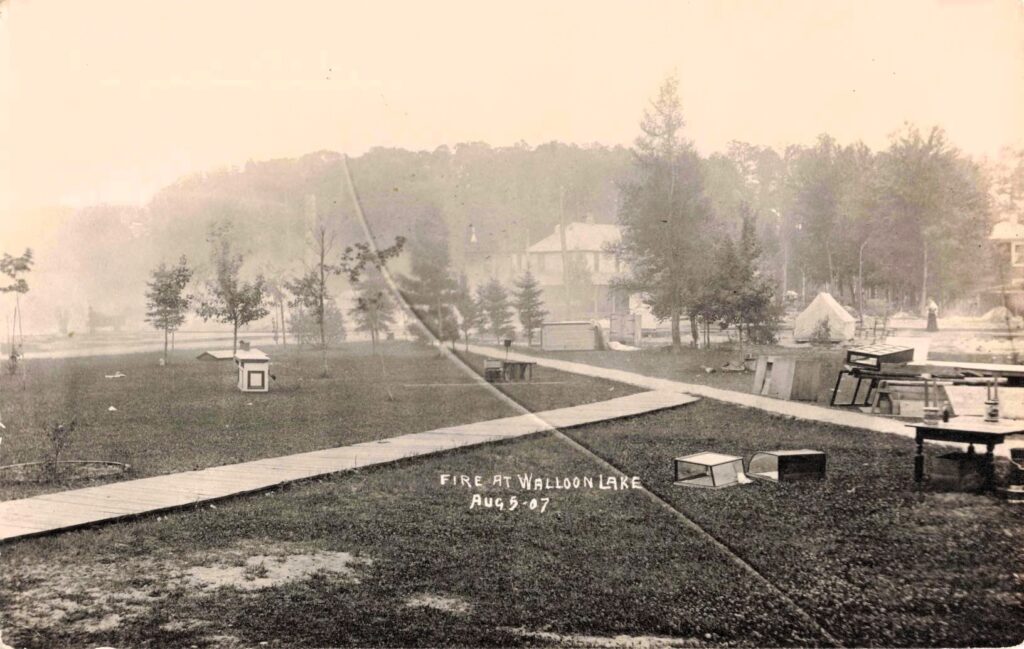
In the summer of 1907, Walloon Lake’s booming tourist season was abruptly interrupted by fire. Late on the night of August 4, flames tore through the village’s small but vital business district. According to Press dispatches published the following day, seven buildings were lost in the blaze.
The damage was extensive. W. H. Ransom’s general store and post office were reduced to ashes. William Grund’s general store and feed mills, Fred Shepard’s delicatessen, Archie Belding’s boat livery and bakery—all were destroyed. The Grand Rapids & Indiana Railroad depot, a lifeline for incoming tourists and local freight, was also consumed by the fire.
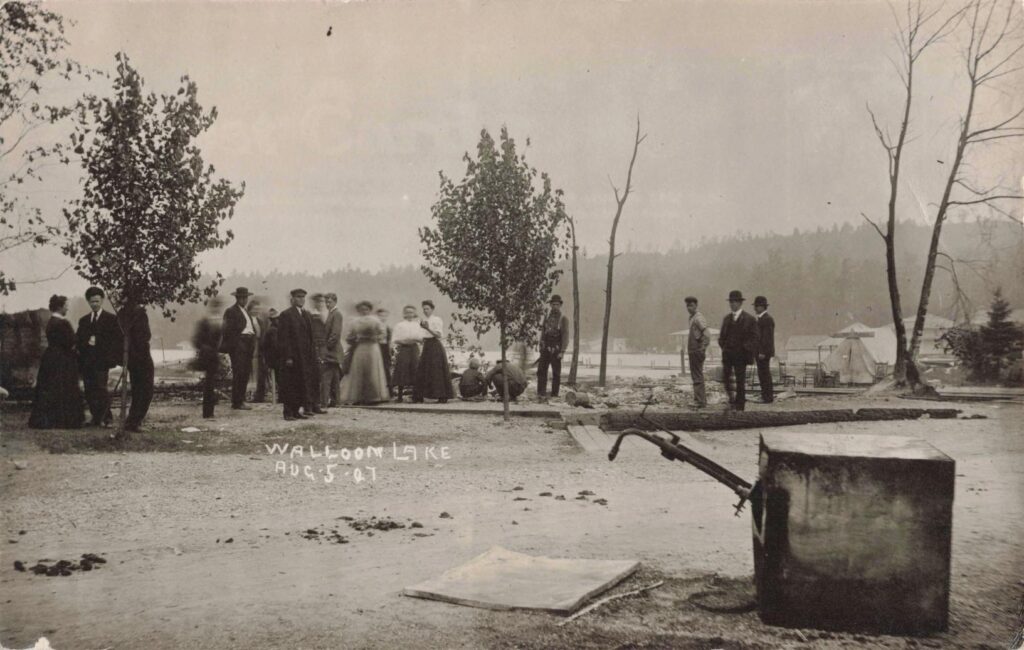
The financial toll was estimated at $20,000, a large sum for the time. Though part of the loss was covered by insurance, the fire disrupted what had become a busy and profitable resort economy.
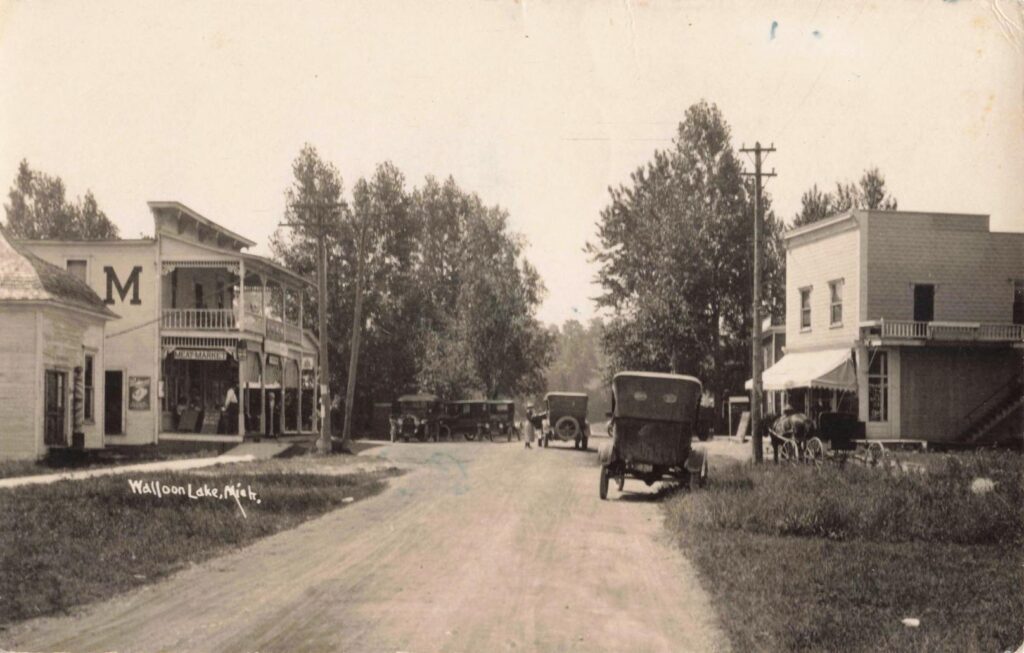
Despite the setback, the village did not fade. By the following summer, reconstruction was well underway. New wood structures stood where the charred remains had been cleared. The trains returned. So did the steamers, the guests, and the summer routines. For Walloon Lake, the fire marked not an end—but a sharp turning point between eras.
A Legacy of Recreation
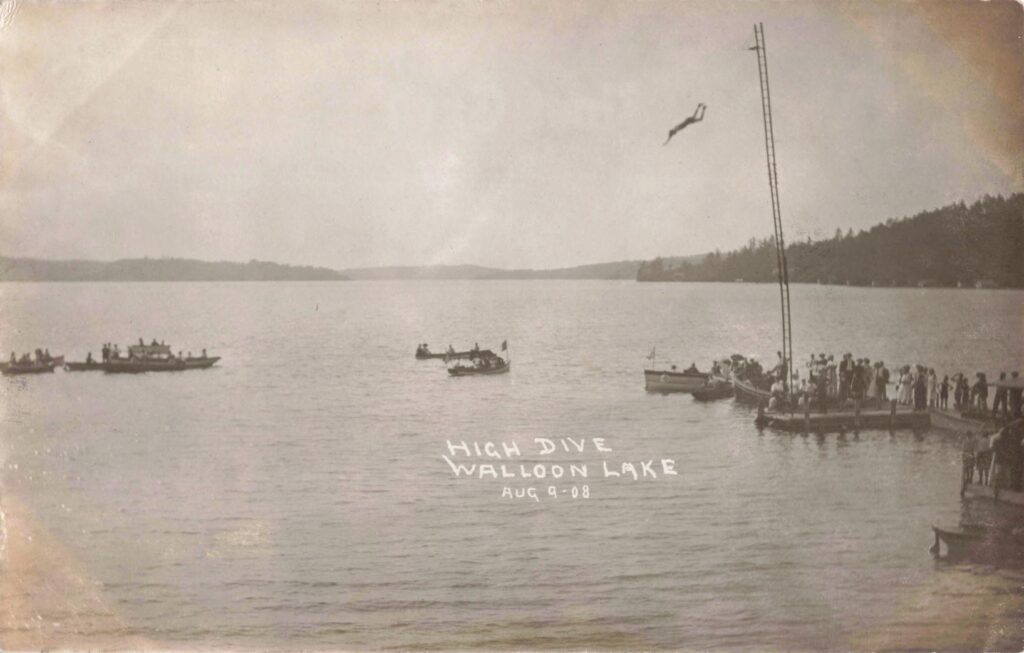
Walloon Lake remains a busy vacation spot. The clear, deep water is popular for sailing, fishing, and swimming. While the village itself still has only a few hundred year-round residents, thousands visit the lake in the summer and fall. Cottages old and new dot the shore, and local groups work to preserve the lake’s clean waters and forests. The history of Walloon Lake – from its Anishinaabe name Muqua Nebis through its days as a railroad and steamboat resort, to Hemingway’s childhood retreat – lives on in stories, markers, and annual visitors. It is a quiet place that has grown rich in history, where each generation has helped shape Michigan’s story.
Works Cited
- Ernest Hemingway Cottage (Windemere). Wikipedia, Wikimedia Foundation, 6 Nov. 2023.
- Exploring Hemingway’s Windemere – Walloon Lake, Michigan. Northern Michigan History.
- Northern Michigan. Wikipedia, Wikimedia Foundation, 10 Nov. 2023.
- Walloon Lake History. Village of Walloon Lake, 2023.
- Ernest Hemingway in Michigan. Village of Walloon Lake.

